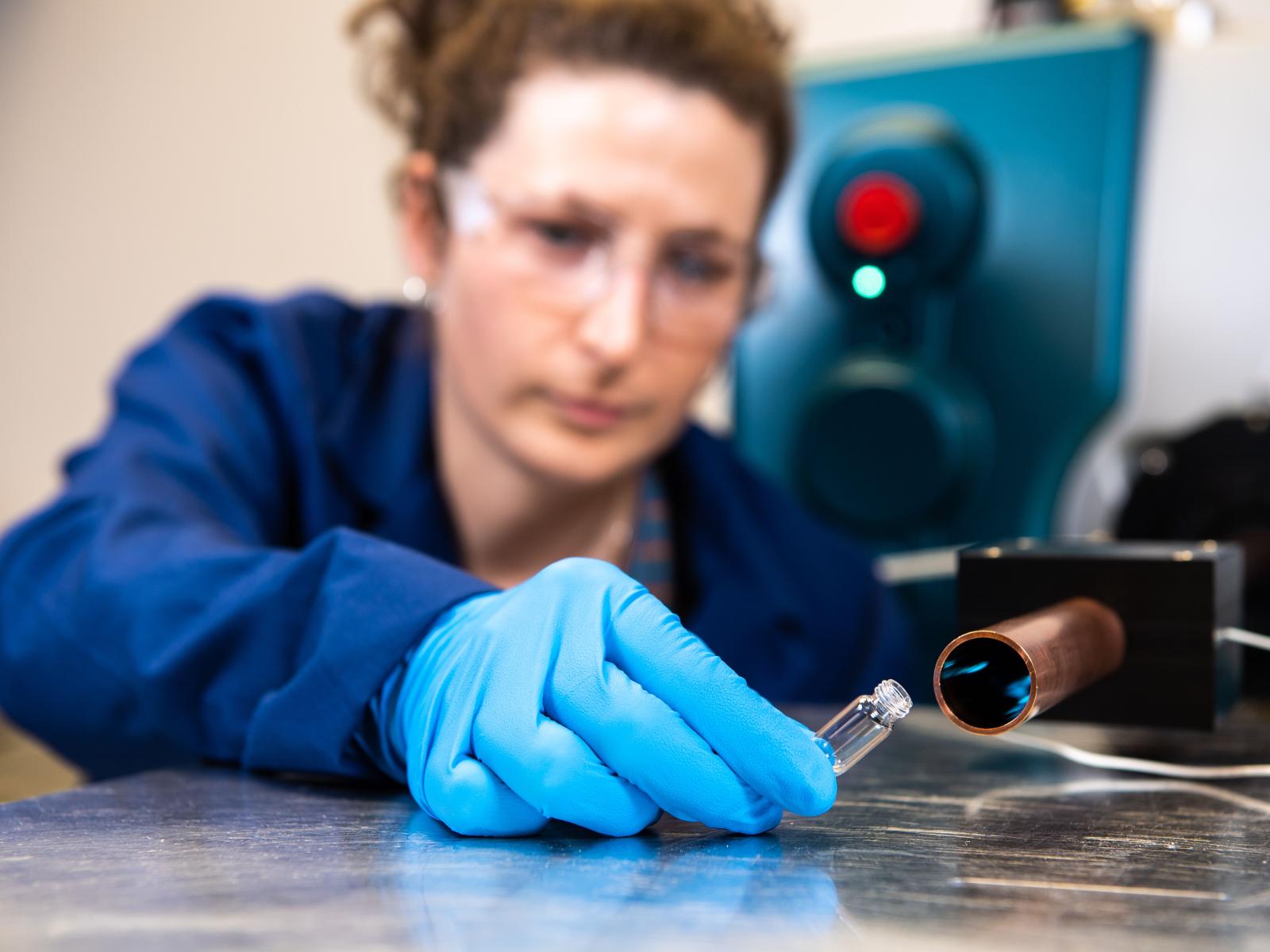Reflecting on 2024: PNNL’s Contributions to National Security, AI and Energy

Elizabeth Denis, a chemist at PNNL, demonstrates a technology that can “sniff” the air and detect extremely low levels of explosives, such as nitroglycerin and the explosive in C-4, from more than eight feet away.
(Photo by Andrea Starr | Pacific Northwest National Laboratory)
As 2024 drew to a close, many of us were reflecting on the past year’s accomplishments. As director of the Department of Energy’s Pacific Northwest National Laboratory, I am proud to share some of the many contributions made in 2024 by our 6,400 talented and dedicated colleagues.
Advancing scientific discovery
PNNL led a study that involved scientists from around the globe collecting nearly 3,000 soil samples and assembling the world’s largest database of soil viruses. Researchers can now use this publicly available resource to study how the diversity of viruses affects agricultural productivity and carbon sequestration.
Earth scientists at PNNL made great strides in understanding aerosols and how these tiny particles interact with clouds to influence weather and climate. Their research is improving models and helping predict how Earth systems might evolve over time.
In chemistry, PNNL scientists are studying their low-cost, efficient solvent that can capture carbon dioxide molecules from sources such as coal-fired plants. Unexpectedly, they discovered the molecules clustered in a way that might lead to new solvents that store significantly more carbon dioxide than those available today.

Improving energy resilience
Experts at PNNL worked with utilities to develop tools to optimize the grid to meet growing demands for electricity—with a focus on keeping costs low and the lights on. ChatGrid™ is a generative AI tool to guide decision-making by grid operators. It allows them to ask questions about the energy system and quickly distills vast amounts of data into easy-to-understand visual representations of the answers.
PNNL and the National Renewable Energy Laboratory collaborated on a study that showed the nation could save as much as $490 billion by 2050 by expanding transmission lines across regions. The team developed a high-resolution model and simulated fluctuations in electricity supply and demand. Results revealed that interregional transmission could support the grid during extreme weather events, for example, by connecting generation resources so electricity can flow where it is needed most.
Researchers also discovered they can use PNNL’s advanced manufacturing process known as Shear Assisted Processing and Extrusion to add a small amount of graphene to electrical-grade copper and enhance the metal’s conductivity. Their development may lead to more efficient electric motors and transmission lines, which translates into cost savings for manufacturers, utilities and consumers.

Enhancing national security
Experts at PNNL explored new approaches for detecting hazardous and illegal substances. For example, researchers extended the range for their technology that finds trace amounts of explosives—from about a centimeter to nearly three meters. The technology reduces the need to swipe clothing and luggage and has been licensed to BaySpec, Inc., with plans to make a commercial detector available next year.
In other work, chemists used mass spectrometry to discover chemical characteristics that determine whether a substance is fentanyl. This chemical signature can help law enforcement officials identify and confirm different forms of the synthetic drug, even those never seen before.
PNNL also provided plutonium processing and characterization capabilities for collaborative experiments at the Nevada National Security Site. The experiments seek to understand the behavior of plutonium and other special nuclear materials under extreme conditions to help ensure the safety and security of the nation’s nuclear weapons stockpile.
Using artificial intelligence to accelerate research
AI made headlines in 2024. At PNNL, researchers are leveraging years of work in this area in new and exciting ways. For example, scientists developed and applied AI tools to quickly sift through images from electron microscopes to find patterns of interest, speeding development of new materials.
In partnership with Microsoft, PNNL researchers are combining cloud-based high-performance computing resources and AI to accelerate scientific discovery. Through this collaboration, researchers demonstrated the power of this hybrid approach by winnowing more than 32 million possible electrolyte materials for solid-state batteries to 18 promising candidates in just 80 hours and then chose one for synthesis and further testing.
In another effort, data scientists collected and extracted more than 4.8 million pages from 28,000 documents related to National Environmental Policy Act reviews. With the help of AI, this information is now available to the public and can be quickly searched and interpreted, significantly streamlining the environmental review process.
As we welcome the new year, I am reminded how fortunate I am to work with the remarkable people behind these and many other amazing accomplishments. Their vital work in scientific discovery, energy resilience and national security is critical to addressing some of our nation’s greatest challenges. I look forward to seeing what they have in store for us in 2025!
Published: January 6, 2025